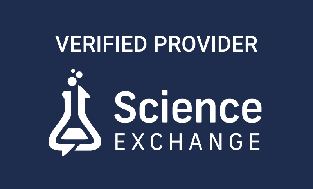Therapeutic antibodies have traditionally been developed via one of two method – phage display and transgenic mouse models. Both approaches have been shown to be successful as several antibody therapies are available commercially. Another method that is gaining interest is B cell screening but as of now, no approved antibody has been developed using this method. The first monoclonal antibody therapy was approved in 198611, and as of June 2022, 162 antibody-based therapies have been approved for commercial use2. It is estimated that at least 23 marketing applications for antibody-based therapies will be submitted by the end of 2023 and this number includes 5 bispecifics and 2 ADCs (antibody-drug conjugates)3. Despite the clinical and commercial success of antibody-based therapies, there are challenges with the current methods that include high costs, long timelines and limited success with targets that have low immunogenicity. Additionally, it is difficult to target functional epitopes and it is important to note that strong binding may not be an indicator of function.
Antibody drug developers are increasingly turning to artificial intelligence (AI) based methods to improve process efficiency and quality of antibody candidates. Several companies are developing AI-powered workflows for antibody discovery. One such company is LabGenius based in the UK that combines automation, machine learning and disease-relevant readouts in an algorithm that identifies antibodies that can differentiate between a normal and disease state based on known readouts4. The process supports the identification of unexpected candidates as there is minimal human intervention and due to the automation and speed of the machine learning process, it takes about 6 weeks from start to finish4. Another example is a recent report from Xtalpi, a company based in China5 who used humanized mouse-generated antibodies as the input data to build AI models. The team combined a large antibody sequence dataset with an AI model that can predict pairing of antigen epitopes and antibody sequences thus reducing the time and costs associated with screening and identifying antibody candidates in mouse model5. Simply put, the AI driven workflow can accurately simulate a humanized mouse model for antibody development in a fraction of time and expense.
Recently, generative AI methods are being used to power antibody discovery. Generative AI is the method used to create language-based algorithms such as ChatGPT and uses patterns and structures from the input training data to create new data. In the antibody discovery space, generative AI can be used to design endless antibody combinations from large data sets that have been built from antibody campaigns6. The unique aspect of using generative AI is the zero shot concept where the algorithm can design new structures that it has not been trained on. This means that the zero shot method can be used to generate antibodies for new targets without requiring training data for that specific target. Given the power of this approach, it is not surprising that companies have adopted the generative AI approach for identifying novel therapeutic candidates including small molecule inhibitors and therapeutic antibodies7. Absci, an antibody discovery company, recently reported the identification of antibodies targeting human EGFR and Her2 using a combination approach of generative to AI to create close to 3 million design per week and high throughput screening to validate antibody candidates that bind to the target antigen8. This combination process eliminated several steps in the antibody development process including optimization of in silico candidates and time-consuming lead optimization studies.
As generative AI becomes integrated into antibody discovery workflows, it increases the probability of identifying novel antibody candidates for diseases that had complex pathophysiology or were deemed “undruggable”. If this potential is realized, then generative AI could completely transform the early-stage screening and identification of therapeutic candidates across multiple modalities.
References:
1https://www.ncbi.nlm.nih.gov/pmc/articles/PMC8664682/#
2https://www.ncbi.nlm.nih.gov/pmc/articles/PMC9535261/#
3https://www.ncbi.nlm.nih.gov/pmc/articles/PMC9728470/#
4https://www.wired.com/story/labgenius-antibody-factory-machine-learning/
5https://www.ncbi.nlm.nih.gov/pmc/articles/PMC10370440/
7https://www.pharmaceutical-technology.com/comment/generative-ai-revolutionise-drug-discovery/
8https://www.biorxiv.org/content/10.1101/2023.01.08.523187v1


